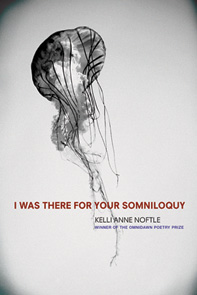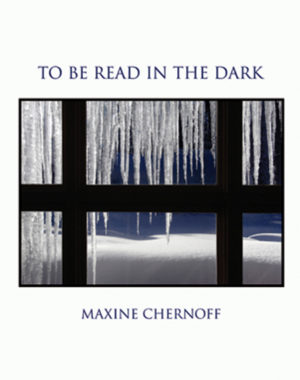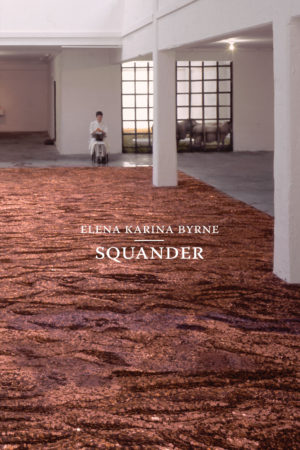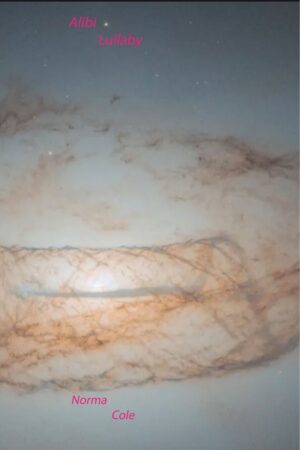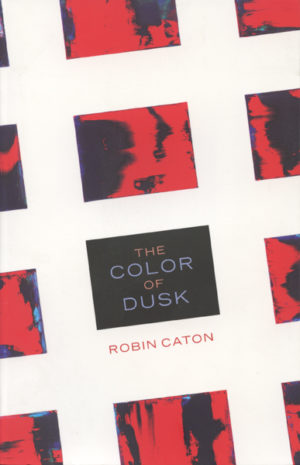Description
Winner of the 2010 Omnidawn 1st/2nd Poetry Book Prize
Hypnagogia is the transitional stage between sleep and wakefulness—an intermediary moment of physiological limbo where hallucinations and out-of-body experiences commonly occur. Kelli Anne Noftle’s poems reside in this space of “threshold consciousness” where a voice speaks to and from the other, hovering inside a liminal world of strange admissions and abstract silences. Her book, I Was There for Your Somniloquy, was selected by Rae Armantrout for the 2010 Omnidawn Poetry Prize and is due for publication in early 2012. Armantrout describes the collection as a “destabilizing meditation on our divided selves: our split brains and checkered evolutionary pasts.” A somniloquy, a speech one makes in one’s sleep, weaves itself through the language, continually disorienting the reader and subverting subject matter, insisting there is a very precarious boundary between the conscious and unconscious, logical and illogical, dream and waking life. Other poems in this book dip below an oceanic unconscious, describing mating habits, taxonomy, and defense mechanisms of deep sea Nudibranchs (sea slugs). Noftle suggests not merely the analogousness between this species and ourselves, but creates an emotional expansiveness, exploring mysteries within and beyond the self.
Kelli Anne Noftle’s I Was There for Your Somniloquy is a thrilling, destabilizing meditation on our divided selves: our split brains and checkered evolutionary pasts. Here we are (in this book): hermaphroditic chimeras talking in what may be our sleep. We’ll know once we figure out what consciousness is. In Noftle’s arresting debut, we can slip from “comma” to “coma” with frightening ease. These poems are nimble, daring, and convincing. Get ready, if you can, for the things they will convince you of!
Rae Armantrout, judge of the 2010 Omnidawn 1st/2nd Poetry Book Prize
Awake, reader! You are about to enter the world of Kelli Anne Noftle’s remarkable debut volume, I Was There For Your Somniloquy. These elegant, sensual, and reckless poems read like Ovid dreaming of the Twenty-First Century. Kelli Anne Noftle knows that we are all Sleeping Beauties, in our hearts and at our cores, each of us waiting for the hard and singular kiss of the world to bring us to our senses. These wise yet disarming poems remind us—all of us, not just poets—that what we hope to speak is often precisely what we have left to dream.
David St. John
The poems of Kelli Anne Noftle capture by turns the beauty, whimsy, fragility and vulgarity of nature’s most elegant animals, sea slugs –and of those who study them. In words as graceful as her subjects, she cleverly reveals aspects of the natural history, sex lives and biology of these colorful cousins of your garden-variety slugs, while also reflecting on the challenges we obsessive science-types face in studying such elusive beauties. I particularly enjoyed the brief back-story to each poem given at the bottom of the page, a little dash of edu-tainment for the reader. My students, colleagues and friends will delight in reading these artful depictions of my beloved critters, and you will too.
Patrick J. Krug, Associate Professor of Biological Sciences California State University, Los Angeles
About the Author
Reviews
Excerpt
Kelli Anne Noftle is a visual artist, musician, poet, and business manager who divides her time between Los Angeles and San Diego. Poems and music can be found at www.kelliannenoftle.com
A brief interview with Kelli Anne Noftle
(conducted by Rusty Morrison)
What aspects of your history and/or what particular obsessions of yours do you see apparent in I Was There for Your Somniloquy?
I am fascinated by “hypnagogia,” the transitional stage between sleep and wakefulness—an intermediary moment of physiological limbo where hallucinations and out-of-body experiences commonly occur. The poems in this book reside in this space of “threshold consciousness” where a voice speaks to and from the other, hovering inside a liminal world of strange admissions and abstract silences. A somniloquy, a speech one makes in one’s sleep, weaves itself through the language of this book, continually disorienting the reader and subverting subject matter, insisting there is a very precarious boundary between the conscious and unconscious, logical and illogical, dream and waking life. Other poems dip below an oceanic unconscious, describing mating habits, taxonomy, and defense mechanisms of deep sea Nudibranchs (sea slugs). I want to suggest not merely the analogousness between this species and ourselves, but to create an emotional expansiveness, exploring mysteries within and beyond the self.
How did this book come to its title? Why did you choose this title?
The title is taken from a line in one of the poems. A somniloquy is a speech a person makes in his/her sleep, also known as sleep-talking. Several years ago, I became fascinated with parasomnias, a category of sleep disorders which involve abnormal behaviors that occur during sleep or during the period between wakefulness and sleep. This curiosity developed after observing my boyfriend (at the time) engage in many parasomias including somnambulism (sleepwalking), sleep-eating, sexsomnia, sleeptalking, and bruxism (teeth grinding). I researched and read case studies about bizarre experiences of somnambulists and sufferers of sleep disorders. There is a sense of mystery associated with somnambulism—is the sleepwalker acting out a dream or releasing repressed emotions? A sleepwalker is usually in a trancelike state while the brain issues commands to the muscles during certain phases of sleep, and I wanted to explore this idea of why and how conscious behaviors and actions emerge from a subconscious place.
What interesting story might surprise readers about the inception or process of writing this book?
I was fortunate to hear marine biologist Patrick Krug speak at Machine Project in Los Angeles a few years ago. The topic of his lecture centered on the sex lives of nudibranchs (sea slugs). Nudibranchs are hermaphroditic sea creatures that engage in unconventional mating habits involving multiple partners at one time and mating between species. My interest in these creatures expanded somewhat beyond mating habits, and first section of the book looks at human sexual relationships and defense/survival mechanisms from the basis that we share distinct evolutionary similarities with this very different species.
Who are the authors with whom you feel a kinship? Who are you reading currently?
Mary Ruefle – The Most of It; Richard Siken – Crush; Rachel Zucker – Museum of Accidents; William Stobb – Nervous Systems; Christian Hawkey – Ventrakl; Maggie Nelson – Bluets
What, specifically, were some of the most interesting or most daunting challenges you faced as you worked through this text? Were there any unexpected surprises—with respect to form or content—that opened in the text for you in the writing process?
The biggest challenge I faced was organizing the poems. I was concerned about how (and if) they worked together as a cohesive body of work. Originally, I thought the manuscript should be divided into two or three chapbooks, but finally was convinced that the reader intuitively draws connections—now I can’t imagine a single poem being omitted from the book. This collection is essentially tethered by themes of loss and separation—I think readers will get that.
I know that you are a singer, songwriter and visual artist. Do you see these creative areas as influencing your work in this book in any ways?
There is definitely an overlap in how I approach visual art, songwriting and writing poetry. My process always begins with an image. It’s very organic and (without sounding too mystical) almost a spiritual experience. I often feel I’ve hallucinated or been inside a dream when making art or writing poems. Afterward, I’m able to begin the editing process, which seems to be in direct opposition to my creativity. You have to have two brains and know how to use them effectively. It took me a long time to figure out how to do that with all art forms. (With regards to song writing and poetry, occasionally I borrow lines from poems for lyrics).
Making and encountering visual art is important to this collection. Perhaps I still harbor some longing to be part of the fine art world (since giving it up after college); I miss the physicality of mixing color or bending chicken wire with my hands and covering it with plaster. The “What We’re Making” prose poems in the book began as epistolary works about the process of painting—addressed to an imaginary art student. Those poems are a bit autobiographical, recalling personal experiences in a painting studio in Italy. I don’t consider any of these to be ekphrastic poems, though I do mention works of art in a museum or gallery setting. In one poem, I refer to a Damien Hirst sculpture (a segmented cow preserved in formaldehyde and displayed in plexiglass) that I saw at a gallery in London many years ago. There is a poem about Magritte’s famous painting, “The Lovers.” Also, I spent a lot of time in the Museum of Jurassic Technology in Los Angeles when I was working on this collection and some poems are littered with little oddities and relics found in and inspired by that bizarre museum.
You chose the artwork that was used in the cover design for this translation. Can you talk about your reasons for this choice?
The first section of the book (poems about sea slugs/marine life) and the cover photo of the jellyfish is a somewhat obvious connection. I was drawn to this particular image because of the detail—the loose network of nerves spilling out and trailing downward reminded me of both brain matter and a mushroom cloud explosion. There are poems in the collection that speak specifically about the brain and the unconscious, and after changing the image to black and white, the neural matter seemed to resemble a human nervous system/internal organs too. It is visceral with an element of voyeurism. The photo was taken in an aquarium—we’re observing and we’re also the observed. This book is both sensual and scientific and I think the cover photo represents these themes.
Noftle’s first book of poems—she is a singer-songwriter and former art student—launches with a slimy sequence about sea slugs. Her surreal, luscious language evokes the sexy ooze and play of underwater invertebrates (the sea slug’s heart is “a slipknot of mucus”).
Like our globe, Kelli Anne Noftle’s book, I Was There for Your Somniloquy, is seventy percent ocean. The poems are submersibles which give us a glimpse of an alien world. It is not the cold, descriptive view of the scientist, but more the view of the visitor to an aquarium who can only see the creatures in the tanks through her own reflection in the glass.
… the speaker identifies a keenly affective, almost poignant, attachment to place—the bluff is nothing, “but it’s what I have”—but the landscape remains distorted, defined more by what it lacks than by what it resembles. At the same time, these passages about Southern California capture the vacancy that can so often characterize those places: a canyon plunging into nothing or rising into smog; things that fall short. “No one told me how / much space to leave / for silence” (37), Noftle writes in “Sunday Night Insomnia”; later, in “Ars Poetica”: “In a house, I am following myself, / one mirror after another. / Not only myself, / but also in relation to” (52). These are poems that place the objects of modern life in relation to themselves and to the gaps in our memory of them, poems that ask provocatively again and again about the stability of our own vision.
Here, personal connection is mirrored in a “polyamorous experience,” and we are given opportunity to question intimacy, gender, and our more savage “animalistic instinct”. How does sleep and dream effect these deliberations? We face scapes of multiplicity, fear, and risk, present in the larger scope of her work. Noftle’s musical method evokes a more organic, “messy” quality that inspires chance and less linear examination.
In the end, maybe the achievement and maintenance of this distance is the goal of Noftle’s poems. You may say: “I was there for your somniloquy” (34). Though I did not understand, I listened. You may give & receive warnings: “Do not repeat this, what I’m about to say–” (35) but you must acknowledge distance, agency, space, the frictions of mystery.
Noftle’s book is not a book of dreams, but a book wherein the somnambulist engages in activities normally performed while awake (a “between” state, not a “beyond” state), such as “Sleepwalkers // in the dark, throwing a Frisbee” (32). To this extent, the poems do not read as linguistic representations of dreams, but “some shape of ourselves leaving” (11).
When art seeks to create the eliminated thing, or to include the deeply felt doubt of creation in the made thing, then it arrives at a crucial paradox, where art and silence come face to face. I have sought that point of conflict in my own writing, and I sensed its presence in the image sequence Noftle skillfully renders.
In her fascination for the transition between sleeping and waking, Noftle has created a series of odes to a transition between the brain and the heart. It is the transition all poetry is truly reaching for. And by the end of Noftle’s debut collection you will know it is attainable.
Noftle’s poetry accomplishes the trick of combining science, nature, and facts in general into deeply personal and beautiful works of art. Noftle deftly uses each poem to create transitions between sleeping and waking, between the brain and the heart.
Life Cycle
The Sea Hare is a bad example—returning
with the low tide, dismal, hairy thing; my epitaph
in a dirty bed. What I will be
remembered for. And you, the weather.
No, water. You the dense weeds feeding
the Sea Hare. Me, the entire population, mass death
of Sea Hares, intertidal disease, bad pair of ears, worn
velveteen. Emptying and returning, elegy
crumbled against limestone. The tropical Sea Hare
will live for six years in its aquarium. A tortoise
can last one hundred and fifty. What you keep
is exact but inarticulate: a sea whorl,
chasing its tail, sad little coil
of itself. Living out this disappointment.
Sea Hares are often found aggregated in large numbers, stranded and dying at low tide. Many usually die from starvation before they can breed.

